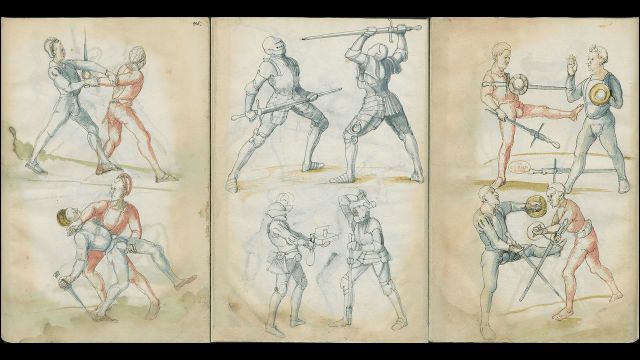Chris
I suppose I am defining Kansetsu waza as any technique that uses the joints.
Fair enough. After all, "joint technique" is really the literal translation. I suppose my take on it is that, by using a Japanese term, you're implying a Japanese methodology (which is different to the ones shown, due to the differences in armour, and a few other details), as well as the fact that "kansetsu waza" isn't universal within Japanese arts, instead is more known/adopted due to it's usage in Judo, where it is one of three sections of the katame waza (entangling, or grappling techniques), along with osae komi waza (pinning) and shime waza (constrictions, or strangulations). Other systems use other terminology, such as gyakute waza, gyaku waza, katame waza, torite, gaeshi waza, and so on, with each implying something a little different about how the system approaches that aspect of it's curriculum.
The old "one hand on the wrist and one on the elbow" comes up a lot in a variety of Ryu ha. As to what Ryu ha the above is...
Sure, but the question to my mind isn't ever so much as "what is done" as "why is it done". If the answer to the second isn't really the same, then, no matter how close the physical actions are, they aren't the same thing. And, in that sense, taking single actions (grab the elbow and wrist, twist the wrist, bar the arm etc) isn't enough by itself... the entire set-up, through to the finish, needs to be taken into account. And one thing I've noticed is a tendency to look to the individual actions, especially when trying to ascertain "effectiveness"... even by some very experienced persons (again, a thread on MAP shows this idea throughout)... which, frankly, misses the point.
To give you an idea, we're currently covering Shinden Fudo Ryu here in my classes... and, realistically, there are few "unique" individual actions to the system (a particular method of striking, but little else). But, once you look beyond the individual actions (particular throws, particular joint locks etc), and see how they are used, and how they fit into the methods of the Ryu, you can see how little physical resemblance really counts. For Shinden Fudo Ryu, it has a primary set of tactics which feature stopping an attackers ability to move, either to escape or to continue with a secondary attack, before you counter. As a result, while a particular arm-lock might be similar to another systems, Shinden Fudo Ryu uses it to immobilize an attacker and provide an opening for a counter, whereas another might use it for a disarming action, or a disabling break. This "why is it done" is what really makes each art unique, even though many of the physical actions could be similar to the point of being identical.
Not sure what JSA and HEMA are but I will take a look at that link
As Himura said, JSA are Japanese Sword Arts, and HEMA are Historical European Martial Arts. What should be realized about HEMA is that they are reconstructions, based on old documents (such as the one you showed in this thread), rather than continuous traditions, as many of the JSA are. As a result, there is often a fair amount of conversation to be had, as HEMA is more about trial and error in order to find what is believed to be correct, and they sometimes check their findings against JSA practitioners who don't use such methods, due to their trial and error having taken place generations before... which can make it almost a "before and after" situation. JSA practitioners can get an insight into the development of their methods by seeing how HEMA practitioners are reconstructing their systems, and HEMA practitioners can look to JSA methods to check what is written against the realities of combat (as understood in the continued traditions, taken from the time of actual usage).
I am not really sure about the Judo -Takagi connection. I don't recall hearing about that myself, but then again I am not as well versed in the histories of Ryu-ha as others.
Okay. I'm unaware of any connection at all, myself. The closest I've come across is some people thinking that, because there's a "Yoshin" in the name of Takagi Yoshin Ryu, it must be related to (Akiyama) Yoshin Ryu, which gave rise to (among other systems) Tenjin Shin'yo Ryu, which was one of the primary sources for Judo... but, of course, Takagi Ryu is not a "Yoshin" Ryu system, with no connection to them, and therefore no connection to Judo (directly). So I was just wondering where the comment came from, whether it was something that Manaka mentioned at some point, or if it was more just a general comment, implying that Judo (modern Japanese grappling) came from older Jujutsu (such as Takagi Yoshin Ryu), rather than implying a true, direct connection.


